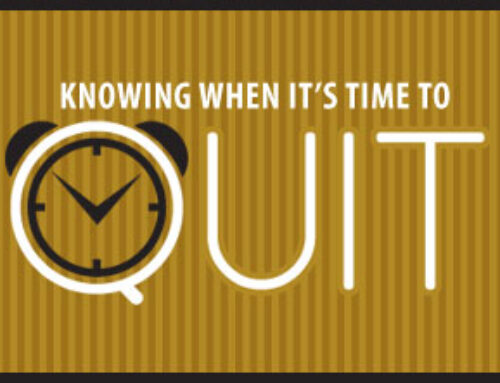Highly Prolific People Treat Their Work Like a Marathon – Not a Sprint
 When we look at the habits and mindsets of people who always seem to be generating new ideas, who are consistently productive, and who produce at rates to which most of us could only aspire, we notice a few things in particular. Namely, these people are open to receiving new ideas, and to having theirs rejected. They don’t treat a “block” like the end of a career, and they don’t fear the idea of “running dry.”
When we look at the habits and mindsets of people who always seem to be generating new ideas, who are consistently productive, and who produce at rates to which most of us could only aspire, we notice a few things in particular. Namely, these people are open to receiving new ideas, and to having theirs rejected. They don’t treat a “block” like the end of a career, and they don’t fear the idea of “running dry.”
In fact, it seems that they focus on what they can create and change, not what could potentially derail or stymie them. Here’s a rundown of the most important things highly prolific people do not FEAR:
1. Trying again.
The main thing that defines highly prolific people from those who only create occasionally is that they have a long-term goal in their minds. They are not afraid to try again, and their objective is to keep going, not to create one thing and let their credibility rest on it. Rather than accept defeat, they learn how to pivot, and what to reinvent.
2. Taking a Break
Highly prolific people understand that when you’re tired, overworked, and fresh out of ideas, that is not the time to try harder, it is the time to reset. If you don’t want to create, then don’t create. When you disengage and focus on other areas of your life that need attention, you will naturally come back to your work when the time is right – this time, refreshed and back in the flow.
3. Their ideas being not well received.
Being disagreed with is not the end of the world. Neither is being disliked, criticized or judged. In fact, the more adamantly you fear these things, the more you will prevent yourself from even trying in the first place. That’s why highly prolific people don’t rush to defend every single idea they come up with. They use other people’s reactions as litmus test: not as a judgment on their worth, but as feedback for what to create next.
4. Challenging the status quo.
Innovators don’t try to perfect what exists, they try to create what doesn’t yet. Overriding the status quo can often come with its fair share of resistance, envy and doubt, all of which is a natural, human response to the unknown. However, highly prolific people try to create what people don’t realize they want rather than perfect what they already have.
5. Being open to other people’s ideas.
Creative people are rarely ever lone wolves, though they can often appear that way. They may have come up with the original idea, but it takes a team of people brainstorming, developing and executing to see something fully into fruition. That’s why prolific people don’t insist that their ideas are the only ideas. They remain receptive to other people’s perspectives, especially those they may not have considered prior.
6. Being perfect all of the time.
If you are going to nit pick every single detail of your work, you will be wrapped up in the minutiae of it for the rest of your life. Perfectionism can be helpful to a small degree, but trying to make everything exactly as you envisioned it all of the time usually only holds you back. Highly prolific people don’t worry about everything being perfect as much as they worry about continuing to create even when it isn’t.
7. Not getting it right the first time.
Creativity is not about getting everything right the first time you do it (that’s the ego’s desire to appear talented or competent) it’s about not being afraid to keep trying again, even in the face of repeated failure.
8. Working overtime when something is starting to ‘flow’.
Highly prolific people are not afraid of breaking their routine, working over time and generally exerting the majority of their energy into something they can see is starting to flow. That’s how they take an idea to a concept to a project that gets off the ground.
9. Pivoting when something isn’t working.
Highly prolific people don’t get too attached to one creative idea over another. The fact is that when something isn’t working, you need to be able to let it go and try again. Don’t let sinking cost fallacy take over your brain and keep you working on something that isn’t going to go anywhere regardless.
10. Running out of ideas.
There are so many things to create, and an infinite number of ways to recreate and reinvent them. This fear comes from the idea that creativity is a non-renewable resource. In reality, creativity is a muscle: the more you use it, the better it gets .
11. A creative drought.
“Creative’s block” (a broader term for what’s often known as writer’s block) is, for the lack of more eloquent language, complete nonsense. It only occurs when we don’t know what we’re trying to do, or that we’re reaching and trying too hard. Creator’s block is not a sign that you are untalented or require more drive, it’s just your body and mind saying it’s time for a reset. It’s how you tell yourself that what you’re working on needs to be reimagined. It isn’t here to derail you, it’s a messenger to assist you.
Thanks for your Wisdom Brianna Wiest




